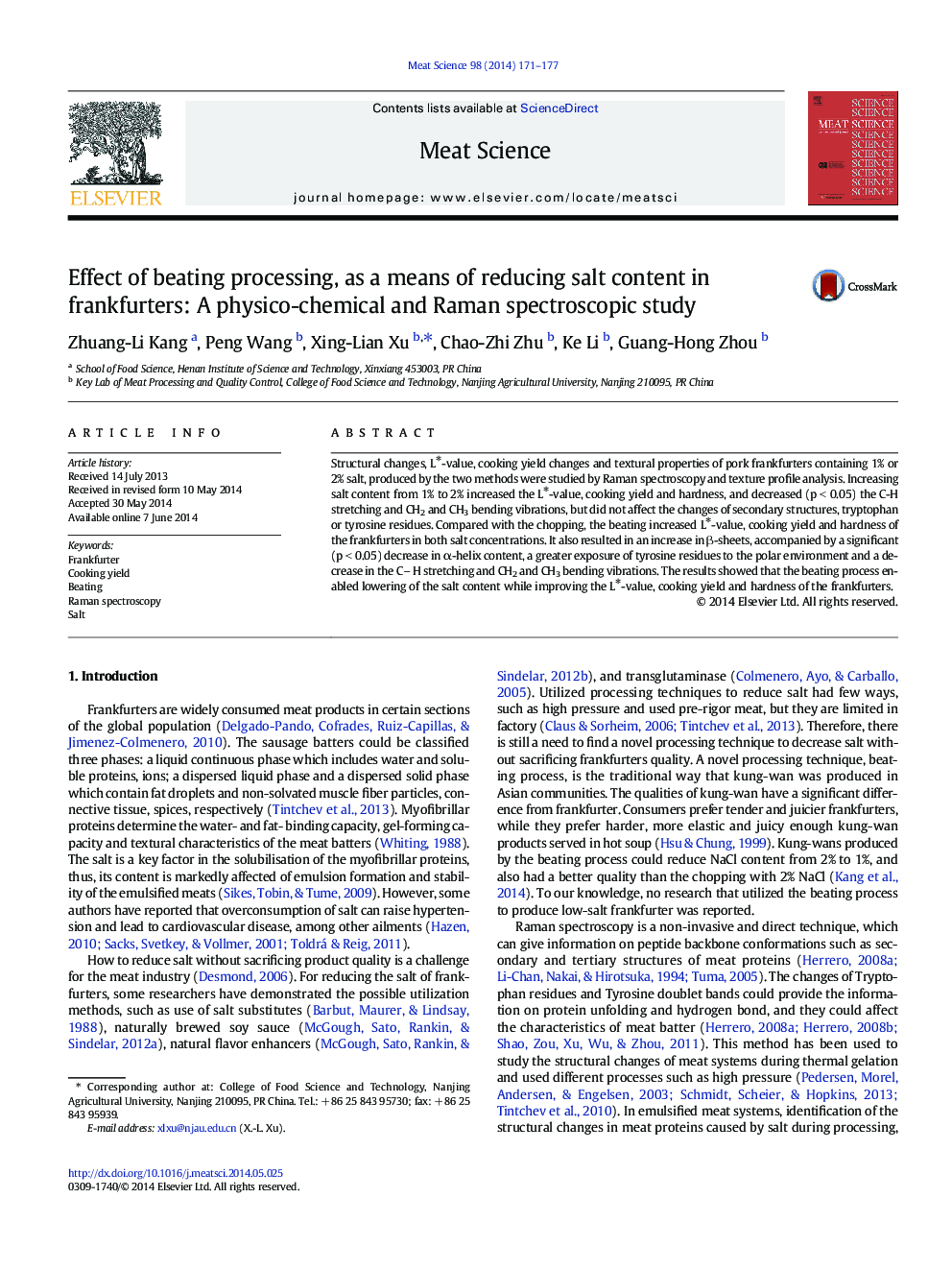| Article ID | Journal | Published Year | Pages | File Type |
|---|---|---|---|---|
| 2449958 | Meat Science | 2014 | 7 Pages |
•Using beating process, L⁎-value, cooking yield and hardness improved.•Using beating process, β-sheets increased and α-helix content decreased.•Using beating process, more tyrosine residues were exposed to polar environment.•Using beating process decreased the CH stretching and CH2 and CH3 bending.•Improved salt content, decreased the CH stretching and CH2 and CH3 bending
Structural changes, L⁎-value, cooking yield changes and textural properties of pork frankfurters containing 1% or 2% salt, produced by the two methods were studied by Raman spectroscopy and texture profile analysis. Increasing salt content from 1% to 2% increased the L⁎-value, cooking yield and hardness, and decreased (p < 0.05) the C-H stretching and CH2 and CH3 bending vibrations, but did not affect the changes of secondary structures, tryptophan or tyrosine residues. Compared with the chopping, the beating increased L⁎-value, cooking yield and hardness of the frankfurters in both salt concentrations. It also resulted in an increase in β-sheets, accompanied by a significant (p < 0.05) decrease in α-helix content, a greater exposure of tyrosine residues to the polar environment and a decrease in the CH stretching and CH2 and CH3 bending vibrations. The results showed that the beating process enabled lowering of the salt content while improving the L⁎-value, cooking yield and hardness of the frankfurters.
